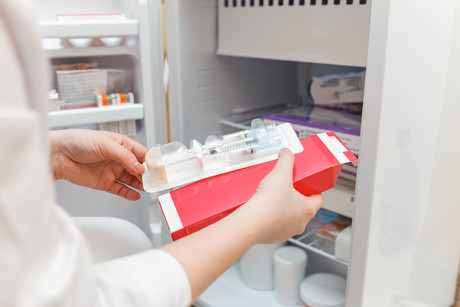Automated temperature controls safer for vaccines

Fridges and freezers in hospitals and other medical facilities play a vital role in maintaining community health and supporting positive patient outcomes.
While most medical professionals are aware of the need to maintain constant temperature control, equipment can fail and mistakes can happen. It’s therefore essential for medical facilities to consider an automated temperature monitoring solution that can help avoid the risks that come with improperly stored vaccines and biomedical materials.
When materials aren’t stored at the correct temperature, they become less effective or can be wasted. A recent study by the US Department of Health and Human Services has found that more than 75% of vaccine providers taking part in the Center for Disease Control Vaccines for Children program exposed their vaccines to improper vaccine storage temperatures for at least five hours.1
This can render vaccines less effective, potentially leading people to believe they’re protected against diseases when they’re not. This can have a knock-on effect for public health, as these people become vulnerable to contracting the illness and passing it onto others.
Given the vital importance of effective vaccines in protecting the community from diseases ranging from measles, mumps and whooping cough to influenza, polio and some forms of cancer, it’s essential to store vaccines properly to maintain their effectiveness. However, when vaccines aren’t stored properly, it can put communities at risk. When vaccines don’t work as expected, patients can lose confidence in the vaccine and in the facility.
Correct storage process
One of the most common ways hospitals store vaccines incorrectly is to put them in the door of the fridge. The constant opening and closing of the door exposes the vaccine to fluctuating temperatures. Instead, vaccines should be stored in the central part of the refrigerator where temperatures remain most constant.
Similarly, frozen samples need to be monitored constantly to ensure they don’t thaw out unexpectedly. This happened recently in a US fertility clinic, where more than 2000 frozen eggs and embryos were accidentally partially thawed.2 The only way to tell whether these materials remained viable was to complete the thawing process but, if that was done, there was no way to re-freeze them. Alternatively, patients could elect to have the materials placed into another storage unit and wait to see whether they were viable in the future.
This put the patients in the difficult position of having to decide whether to proceed immediately with fertility procedures that may have been planned well into the future or take the chance that their stored embryos and eggs may not be viable.
This was an unfortunate incident that happened because of an equipment malfunction. It left patients and families in an unenviable position and damaged trust in the facility itself. This highlights the importance of having a working, reliable temperature monitoring solution in place.
Automated is safer
Automated environmental monitoring systems let hospitals monitor and document a range of information such as temperature, humidity, carbon dioxide and other important conditions to ensure that vaccines and biomedical materials are stored correctly to protect the materials and patients.
Automated systems can automatically monitor the temperature of the refrigeration unit and immediately alert staff to any changes that could affect the integrity of the medicine or biomedical materials. Hospitals can get real-time notifications about the safety of the materials and other temperature-sensitive assets.
When selecting an automated environmental monitoring system, it’s important to choose a solution that delivers in five key areas:
- Easy integration with existing Wi-Fi networks and user interfaces.
- Versatility through a small footprint, buffering options, visual and audible alerts, user configuration and locating features.
- Simple installation with no wiring.
- Low maintenance, long battery life and the ability to move sensors as needed.
- Enterprise-class with a single infrastructure to support countless applications.
Automated solutions are the smart option for hospitals looking to optimise temperature control and minimise the risk of adverse outcomes resulting from equipment malfunctions.

References
1. https://oig.hhs.gov/oei/reports/oei-04-10-00430.pdf
2. https://www.cnn.com/2018/03/09/health/frozen-eggs-embryos-risk-after-freezer-malfunction/index.html
Could this tailored heart pump transform care for half of heart failure patients?
Half of the 64 million people living with heart failure have no access to heart pump treatments....
Breastfeeding challenges healthcare professionals should be prepared to address
A neonatal nurse and lactation consultant sets out what she sees as the most common breastfeeding...
Framework seeks to cut medicine errors at transitions of care
The first coordinated, hospital-based approach to medication management at transitions of care...

![[New Zealand] Transform from Security Awareness to a Security Culture: A Vital Shift for SMB Healthcare — Webinar](https://d1v1e13ebw3o15.cloudfront.net/data/89856/wfmedia_thumb/..jpg)
![[Australia] Transform from Security Awareness to a Security Culture: A Vital Shift for SMB Healthcare — Webinar](https://d1v1e13ebw3o15.cloudfront.net/data/89855/wfmedia_thumb/..jpg)




